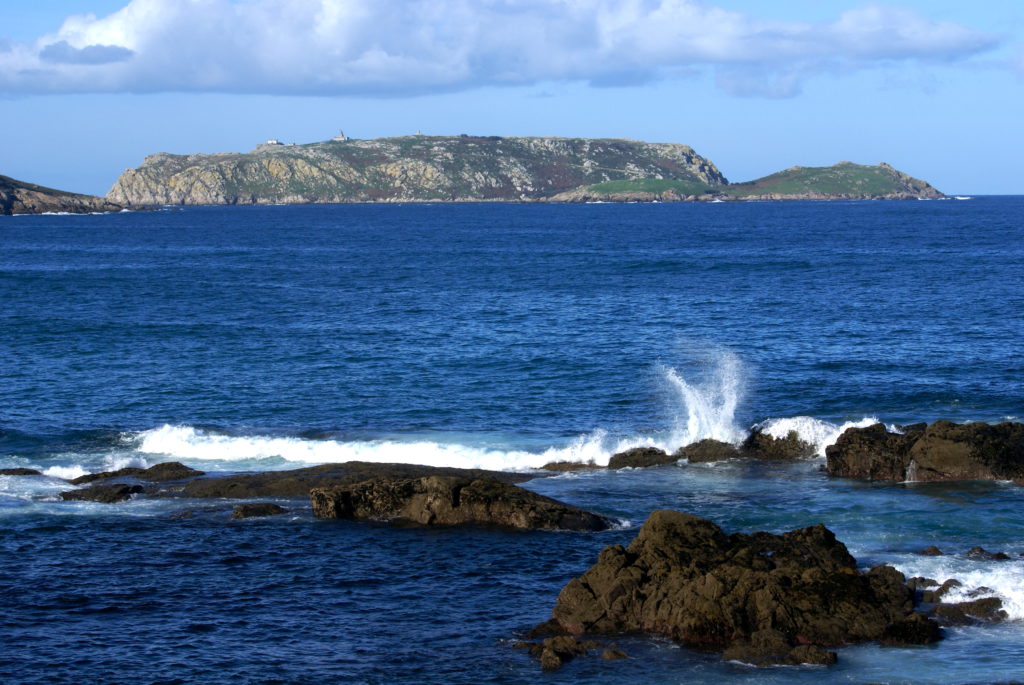The first or last lighthouse
Sisargas Islands
Although the neighbours of Malpica always refer to the archipelago as “a illa” in the singular, the Sisargas are formed by three independent islands. They are the Grande, the Chica and the Malante surrounded by several surrounding islets such as the Chalreu, the Xoceiro or the Magnánimo, named after the shipwreck of a ship with the same name.
A 2-kilometre trail leads to the lighthouse from the small pier of the Sisarga Grande,. Due to its location, the lighthouse of the Sisargas is the first of the Costa da Morte (Coast of Death), or the last, if the voyage goes north. Built in 1853, like the lighthouse of Cape Fisterra, it is one of the oldest lighthouses on the Costa da Morte (Coast of Death). Its history is linked to that of another shipwreck, the English steamship R.M.S. Solway (08/04/1843), in the nearby Baldaio shallows. After the tragedy, shipowners and the British government harshly criticised the lack of navigational aids in A Coruña, since the only lighthouse that existed at that time was the Tower of Hercules, and opted for Vigo as a port of provisioning for their crossings.
Between 1912-1915 the lighthouse was extensively remodelled. Much later, until before its automation in 2002, the lighthouse keepers lived here in shifts of 10 or 15 days, unless storms delayed their return to the mainland. In addition to the light signal, it had a powerful siren for foggy days, which emitted a two-second sound every fifteen seconds.
In addition to the fishing village of Malpica, one of the best natural vantage points overlooking the archipelago is Cape Santo Hadrian.
Tara, local history of maritime rescue.
In the 1980s-1990s, personnel and volunteers from the Red Cross of the Sea participated in the rescue operations. They had operational bases in A Coruña (Blanca Quiroga boat), Malpica (Tara), Laxe (Taín) and Fisterra (Ara Solis). In addition, as a unit linked to the Army, many young men performed both military service and conscientious objection alternative service in the Red Cross.
Nowadays, rescue services are professionalised, with highly trained technicians and much more efficient equipment and with a greater radius of action. Boats are maintained in Malpica, Laxe and Fisterra, although the bases do not have the same functions.
GALLERY

LOCATION
